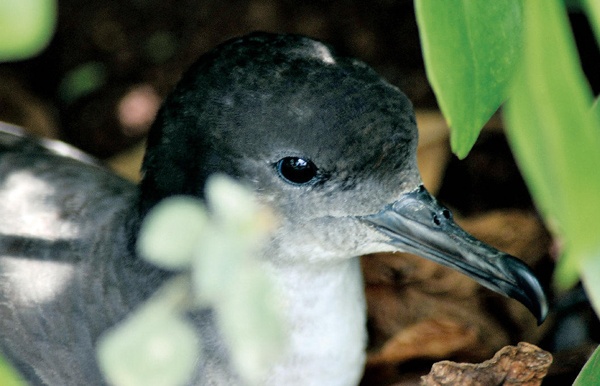LIHU‘E — The County of Kaua‘i could be out of federal probation in two weeks, if it can convince a U.S. District Court judge that it has taken appropriate steps to protect the threatened ‘a‘o, or Newell’s shearwater, from lighting
LIHU‘E — The County of Kaua‘i could be out of federal probation in two weeks, if it can convince a U.S. District Court judge that it has taken appropriate steps to protect the threatened ‘a‘o, or Newell’s shearwater, from lighting at county facilities.
“We are still on federal probation,” County Attorney Al Castillo told the Kaua‘i County Council at a meeting Wednesday. Two-and-a-half years ago, the county was put on probation for up to five years, after pleading guilty to violating the Migratory Bird Treaty Act.
A hearing March 8 in Federal District Court may result in the county being released from the probation, if the proof of compliance satisfies Judge Leslie Kobayashi. If that happens, the county could also receive an incidental take permit from the federal government.
During their maiden flight, the ‘a‘o confuse stadium lights with the full moon, and often find themselves circling the artificial lights until exhaustion causes them to drop to the ground, where they could be easy prey for introduced predators, such as feral cats, Deputy County Prosecutor Andrea Suzuki said.
In an effort to mitigate the problem, the administration installed shielded lights — pointing straight down — in several facilities.
Council Chair Jay Furfaro said the county already spent $4.7 million in lighting retrofits, and another $800,000 is earmarked this year for the same purpose.
Suzuki couldn’t tell the council how many ‘a‘o were hurt or killed during the last 30 months in which the county has been in probation, because disclosing such details now could potentially harm the county during the court proceedings in two weeks.
But she said more than 30,000 ‘a‘o have been picked up and released in the last 30 years.
Despite many conservation efforts, data shows a the ‘a‘o population is doing a steep dive toward the endangered status.
Suzuki said cars with a radar attached to their roof drive all day around Kaua‘i during fledging season, which goes from Sept. 15 to Dec. 15. The radar picks up activity from adult ‘a‘o, which fly at about 40 miles per hour. Gathered data shows a steep decline year after year, she said.
The only ‘a‘o population estimate available is 84,000 individuals (19,300 breeding pairs in the spring and 16,700 breeding pairs in the autumn) based on at-sea observations between 1984 and 1993, according to a report published by the University of Hawai‘i Manoa in December 2011.
The UH report states that a 2009 study says there was a 75 percent decline in population from 1993 to 2009. Another study suggests the breeding population of ‘a‘o on Kaua‘i is 10,000 pairs. But according to the UH report, these numbers would suggest a 40 to 48 percent decline in the last 15 years, which is inconsistent with radar data.
“Repeating at-sea surveys or determining another method of population estimation is critical to recovery planning,” the report states.
U.S. vs. Kaua‘i
After five years of telling county officials — verbally and in writing — that they should take steps to protect the ‘a‘o from falling victim to lighting at county facilities, federal officials threatened the county with hefty fines in 2010, according to court documents.
For nine ‘a‘o that died between 2005 and 2009 after becoming disoriented by stadium lights, the county was facing $1.8 million in fines. And there could be more to come.
Facing the severity of the charges, Castillo agreed to pleading guilty to a single misdemeanor charge of violating the Migratory Bird Treaty Act, paying a sentence of $15,000 and going on an extended probation.
A memorandum of agreement signed Sept. 9, 2010, placed the county of Kaua‘i on a five-year probation, with the possibility of early termination provided that conditions were met, including mitigation measures.
Other conditions of the agreement include a donation of $30,000 to the Kaua‘i Humane Society to use in their Save Our Shearwater program, and $180,000 to the National Fish and Wildlife Foundation to be placed in an account to benefit the ‘a‘o.
‘A‘o
The federal government passed the Endangered Species Act in 1973. Two years later, the ‘a‘o was listed as a threatened species. About 80 percent of the ‘a‘o population is believed to be on Kaua‘i, according to Suzuki.
The majority of the ‘a‘o nest in mountainous terrain between 500 to 2,300 feet on Kaua‘i, according to USFWS. The ‘a‘o can climb shrubs and trees before taking flight, but it needs an open downhill flight path to become airborne.
The ‘a‘o was once abundant on all main Hawaiian islands, according to the USFWS Service. But by the 1930s, it was already reported in danger of extinction.
The introduction of the mongoose, cat, black rat and Norway rat may have played a primary role in the decline of ground nesting seabirds such as the ‘a‘o, USFWS states.
A second threat to the ‘a‘o is its attraction to light, according to
USFWS.
“Increasing urbanization and the accompanying manmade lighting have resulted in substantial problems for fledgling shearwaters during their first flight to the ocean from their nesting grounds,” USFWS states.
When attracted to manmade lights, fledglings become confused and often fly into utility wires, poles, trees and buildings and fall to the ground.
Between 1978 and 2007, more than 30,000 ‘a‘o were picked up by island residents from Kaua‘i’s highways, athletic fields and hotel grounds, according to USFWS.
• Léo Azambuja, staff writer, can be reached at 245-3681 (ext. 252) or lazambuja@ thegardenisland.com.


